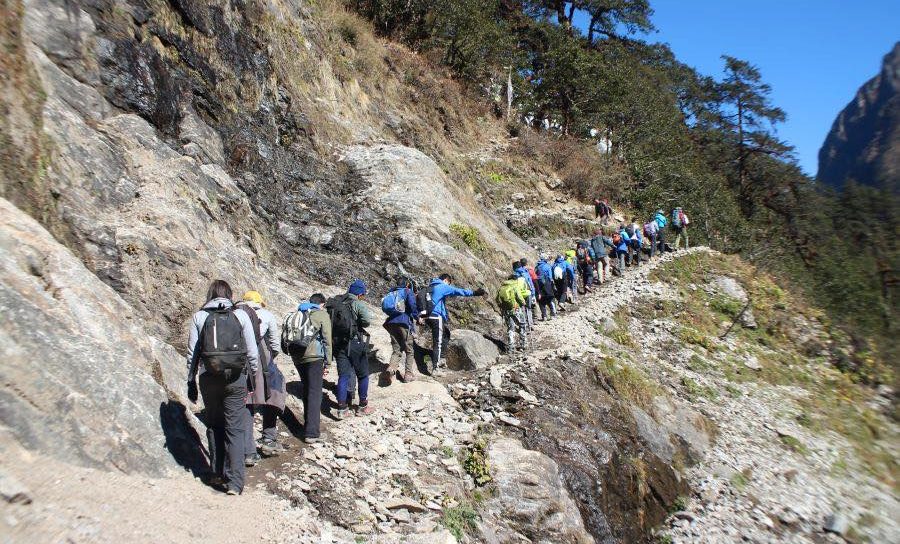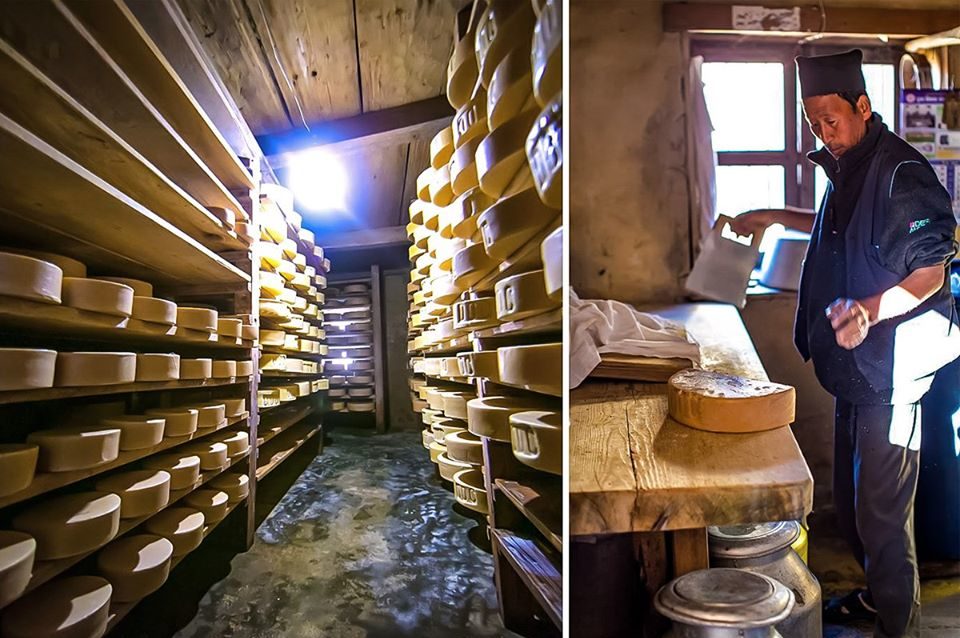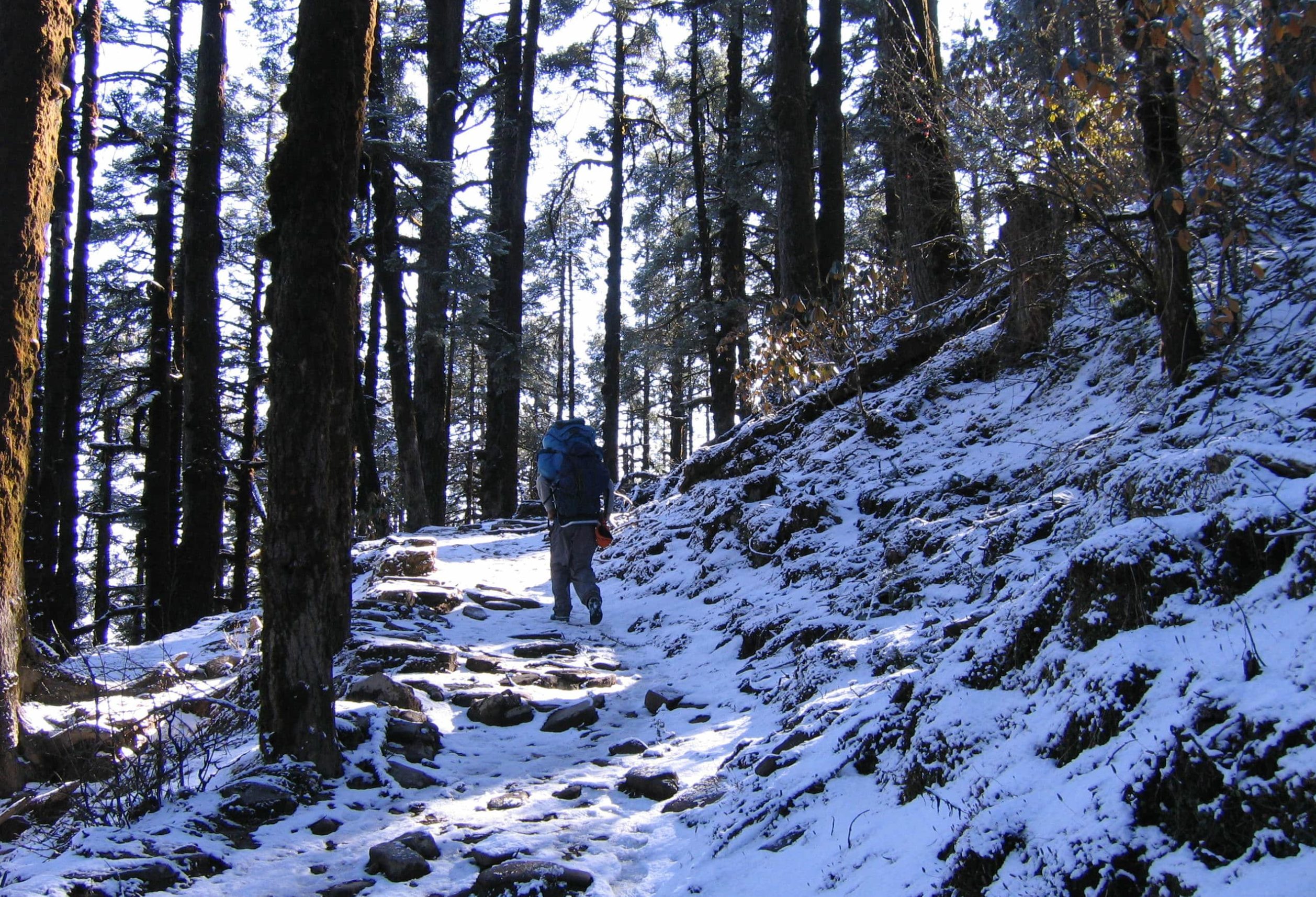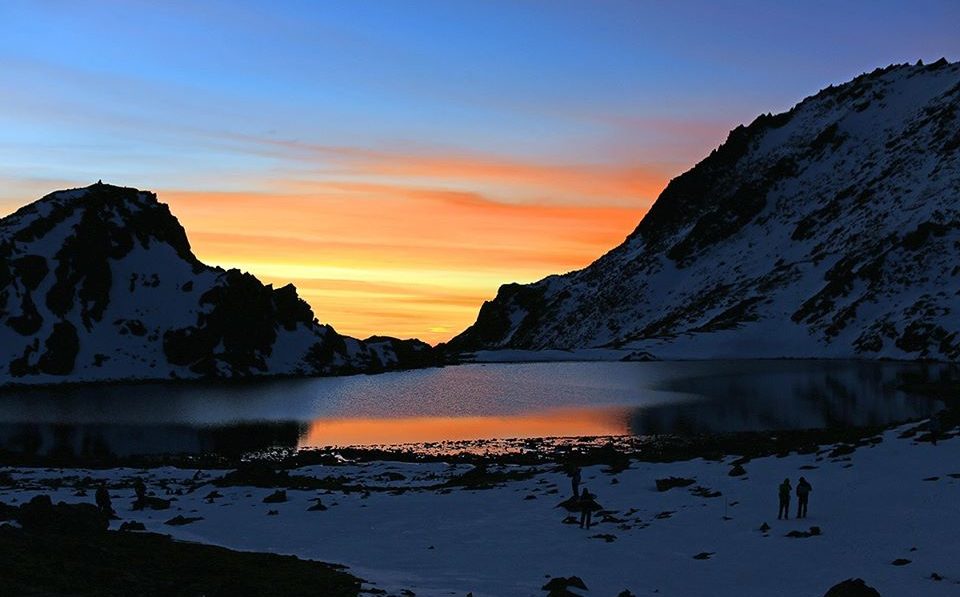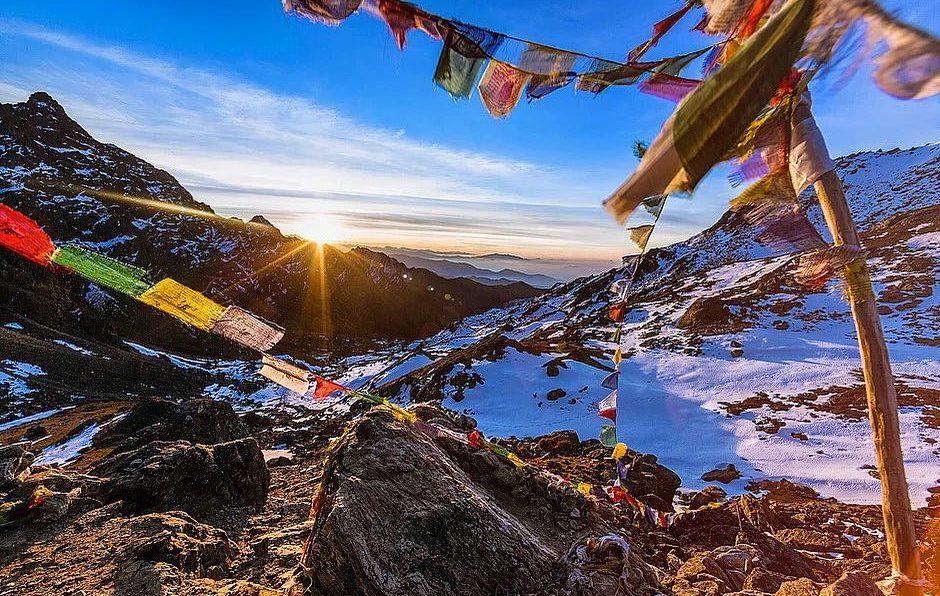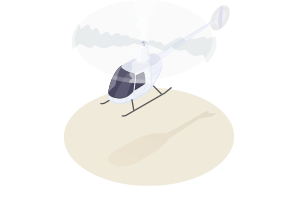Langtang – Gosainkund Lake – Helambu Trekking is one of the most popular in terms of natural and cultural richness in the Langtang region of Nepal. Very few trekkers explore this area. Here, Nepal’s first Himalayan National Park named Langtang National Park was officially set up in the year 1976. The northern and eastern border of the park adjoins the Trans Himalayan border to Tibet. The western boundary is demarcated by the two popular rivers of Nepal-Bhote Kosi and Trisuli and towering Ganesh Himal with a range of 6000 to 7000 meters. The southern border lies 132 km north of the Kathmandu Valley. The park has temperate and sub-alpine vegetation. Wildlife includes migratory birds, deer, wild boar, Himalayan black bear, ghoral, grey langur monkey and leopard, Tahr, and Pika.
Trekking to Langtang – Gosainkund Lake – Helambu is spectacular as well as adventurous for both nature lovers and adventure enthusiasts. Langtang region is mainly inhabited by Sherpa’s and Tamang people whose religious practices, language, and dress are much more similar to those of Tibet. A journey to Langtang – Gosainkund Lake – Helambu Trekking offers an opportunity to explore the ethnic villages, climb small peaks and visit glaciers at a more comfortable altitude than other trekking regions in Nepal. Most of the trekking trails in the Langtang and Helambu area are well connected with teahouses (lodges) offering shelter and food to the trekkers.
Popular places you will encounter during the trek are Langtang Valley at Kyanjin Gompa, Tsergo Ri (4,984 m) (Tsergo Peak), Lake Gosainkunda lake, and Helambu Trekking. At Kyanjin Gompa you make a day excursion to Tsergo Ri from where the best view of Himalayan peaks such as Langtang Lirung, Gang Chenpo, Naya Kangri, Dorje Lakpa, Ganesh Himal can be observed. From Lake Gosainkund and Helambu during the trek, you will see Mt. Manaslu, Mt. Gourisankar Mt. Ganesh Himal, and many other snowy peaks.
Various villages inhabited by Sherpa, Tamang, and Yolmo ethnic groups of people, terraced fields, Rhododendron, and Bamboo forest are common sights at the start and the end of the trek. The trails are well maintained and you will walk through forests, meadows, and pasturelands with yaks along the route. You will experience the changes in landscape, views, and also the culture and lifestyle of the people throughout the trek. Gosainkund Lake is a sacred site for Buddhists and Hindus. Every year in August on full moon day Gosainkund Lake is thronged with approximately 20,000 pilgrims to attend a big festival. Many Buddhists believe that dying in a place as holy as Lake Gosainkund is good for the soul and increases the chances of being released from the cycle of rebirth. There are four or five teahouses clustered together in one corner of the lake. However, it is a very rewarding trek in a non-touristic area.
Helambu is among the delightful villages in the Yolmo region, Melamchi Gaon, there is a sacred cave of Guru Rimpoche’s (Guru Padma Sambhava) and his consort. Tarkeyghyang, Lhakhang Gompa here you can find lots of meditation centers. Indeed lots of Buddhist practitioners spending their time like 3 years, 6 years, and 9 years or whole lifespan. Practitioners were Buddhist monks and nuns including lay peoples. Near Tarkeyghyang the worth visiting as there are some very old Gompas (monasteries). Also, in Yolmo where you can see the oldest Buddhist Monastery that name is Chiri Gompa. You can see the sunrise over the Himalayas from Sermathang and the also sunset, when seen from there is quite mesmerizing as well.
Spring and autumn is the best season for trekking to Langtang Lake-Gosainkund-Helambu.


